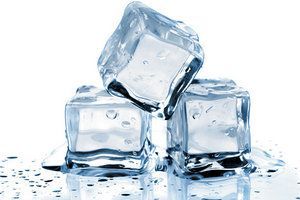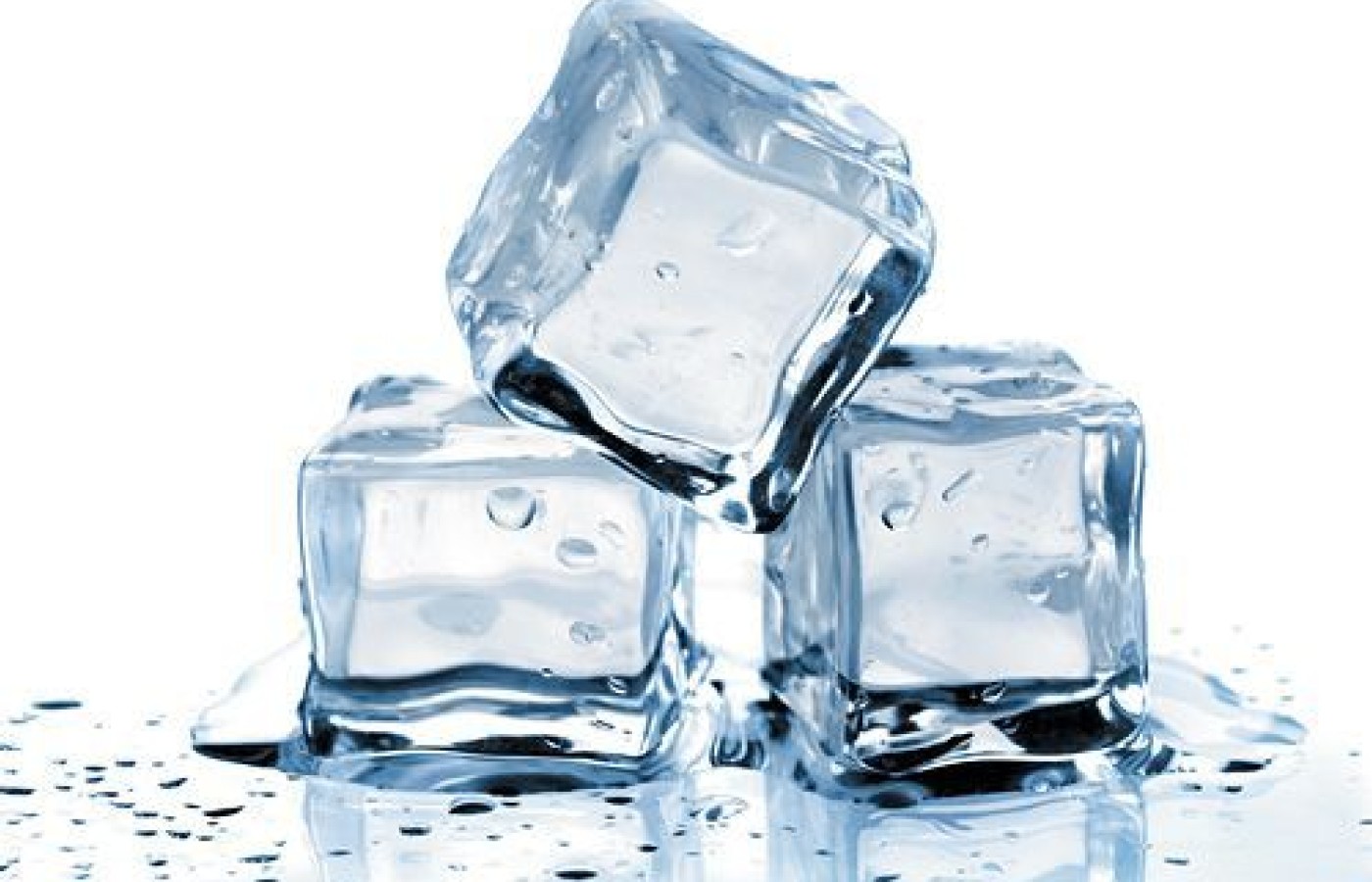New York's highest court of appeals has held that no-fault insurers cannot deny no-fault benefits where they unilaterally determine that a provider has committed misconduct based upon alleged fraudulent conduct. The Court held that this authority belongs solely to state regulators, specifically New York's Board of Regents, which oversees professional licensing and discipline. This follows a similar recent ruling in Florida reported in this publication.
Trends in Cryotherapy
Cryotherapy has been a key part of many chiropractic practices for years. Whether it's ice packs, gel packs or the latest ice sprays, it's a safe bet that the majority of chiropractors use ice. Sometimes we tend to take for granted the modalities that are the norm in practice. Let's take a look at the latest research on cryotherapy, including new technology from whole-body cryotherapy chambers to a "cooling glove" that enhances recovery and produces more strength gains than steroids. It's time to revisit the importance of cryotherapy in clinical practice and how to apply the latest findings in your practice. You'll never look at cold therapy the same way again.
One of the goals of cryotherapy is to decrease inflammation. However, there is also significant interest in recovering faster from an exercise program, allowing an individual to train harder. In the rehabilitation setting, this can lead to significant increases in compliance and strength gains while limiting inflammation.

Past studies have shown a lack of increased recovery from symptoms of exercise-induced muscle damage.1-2 However, a recent Cochrane Review found there was some evidence that cold-water immersion reduces delayed-onset muscle soreness after exercise compared to passive interventions involving rest or no intervention.3 Another study by Pointon, et al., found that although cryotherapy had no effect on recovery, it did have an effect on the perception of pain.4 Clinically, ice therapy during the rehabilitation stages can be effective in reducing pain perception throughout the exercise program and should be considered beyond the acute stage.
Most of the past studies were done with various types of ice packs, which may have led to different results. It begs the questions: Has cryotherapy research advanced in the past few years? Are there any new and unique technologies and protocols that will bring a revival of cryotherapy in the clinical setting? The answer to both questions is a resounding yes.
Recent Research
All signs point to a resurgence in the use of cryotherapy for recovery, performance enhancement and rehabilitation. This newfound interest in cryotherapy has led to new research on the use of ice packs, gels and cold-water immersion. Let's take a look at current cryotherapy research and its implications on clinical practice.
Numerous animal studies suggest significant reductions in muscle temperature at the injury site with the use of cryotherapy. However, results are not as significant with human intervention. Cryotherapy's effectiveness is dependent on the injury type, the depth of adipose tissue, the type of cooling modality used, and the length and frequency of icing. According to Bleakley, et al., "It is unlikely that a 'panacea' cooling dose or duration exists in the clinical setting."5 However, there are several research studies that can shed some light on proper implementation.
Ice ProtocolSummary
|
These results have practical applications if you are treating an acute sports injury. As athletes tend to want to return to sports as soon as possible, ice water immersion may maintain the effects of cryotherapy much longer than regular ice bags. A study by Myrer, et al., supports these results: cold whirlpool was superior to crushed ice packs in maintaining prolonged, significant temperature reduction after treatment.7
With respect to ice packs themselves, it was found that ice packs made of cubed ice or "wetted" ice (ice and water) were also superior to crushed ice in reducing intramuscular temperatures.8 The study points out that wetted ice is the closest one can get to an ice bath. The water /ice combination allows for better contouring of the ice pack over the affected surface area.
Another important consideration to take into effect is the size of the ice pack. A study by Janwantanakul suggests that an ice pack containing at least 0.6 kg of ice leads to a greater magnitude of cooling than one that is less than 0.3 kg, regardless of the size of the contact area.9
The length of ice application is dependent on the amount of subcutaneous fat present. Another important consideration with respect to ice application is the adverse effects of prolonged ice therapy. Prolonged use can sometimes lead to frostbite or nerve damage.10-11 That's why some recommendations note that ice therapy should not exceed 20 minutes at a time. However, a study by Otte, et al., reinforces the fact that people with different subcutaneous adipose tissue thickness require different ice therapy times. In fact, the authors recommend 25 minutes of ice time for patients with a skinfold of less than 20 mm to a 60-minute application for skinfold measurements of 30 mm to 40 mm.12
Research also suggests various tissues cool and rewarm at different times. A study by Enwemeka, et al., showed that temperature falls significantly at the skin and 1 cm level after eight minutes of treatment.13 During the application, there was insignificant temperature decrease in the deep intramuscular areas. However, as superficial temperatures rose, the deeper tissues began to cool to the point that 40 minutes post-application, the deeper areas were cooler than the superficial areas.
Therefore, the coldness of the skin should not be an indicator of how effective the cooling process is for the deep intramuscular areas. In fact, a study by Jutte, et al., showed that superficial temperatures were a weak predictor of intramuscular temperature during cryotherapy.14
Technology Trends
There are two different types of cryotherapy that will increase in popularity in the near future, in my opinion: whole-body cryotherapy and the "cool" glove, designed to improve markers of health and improve recovery. Whole-body cryotherapy is a unique form of cryotherapy, delivered via a cryochamber. The patient is exposed to very cold air maintained between -110 degrees C to -140 degrees C for approximately two to three minutes. The technology was initially developed to accelerate recovery for athletes from muscle injury.5 However, focus has shifted to the relief of pain and inflammatory symptoms in various musculoskeletal conditions, including arthritis, rheumatic conditions and fibromyalgia. A study by Ma, et al., suggests significant improvements in VAS (Visual Analog Scale) and active ROM after whole-body cryotherapy for the management of adhesive capsulitis of the shoulder.6
In another study, when compared to cold water immersion (CWI), whole-body cryotherapy elicited a greater reduction in skin temperature.7 And compared to far-infrared and passive modalities in recovery from exercise-induced muscle damage in highly trained runners,8 three whole-body cryotherapy sessions, performed within 48 hours, accelerated recovery to a greater extent than infrared and passive modalities.
Another new cryotherapy technology gaining traction is the "cool" glove. The technology is based on the premise that cooling via the palm can enhance recovery and improve aerobic exercise endurance and work volume. The technology was originally designed to improve recovery following surgery. The results were so effective that the shift focused to enhancing performance.
A recent study evaluated the use of a cooling glove to increase work volume during resistive exercises.9 The study found that over a six-week period, the treatment group showed significantly more enhancement in performance compared to the control. Pull-ups increased by 144 percent compared to 5 percent for the control group. Over three weeks of bench-press training, palm cooling increased work volume by 40 percent compared to 13 percent in the control group.
In the clinical setting, the ability to recover faster can have many implications. Patients who fatigue quickly or are unable to recover fast enough, particularly due to pre-existing conditions, can benefit from cryotherapy advances. For example, a "cool" glove was recently tested on multiple sclerosis patients. Many patients with MS experience increased fatigue and pain with increases in temperature due to ambient conditions or physical activity. A study by Grahn, et al., found that the trial group using the cooling treatment increased exercise duration by 33 percent.10
The latest research sheds more light not only on current cryotherapy practices, but also how cryotherapy can be utilized in novel new ways. Tailoring cryotherapy to the individual patient can produce significant results through the course of rehabilitation. It can be utilized effectively not just in the acute stage of care, but through the entire rehabilitation program and beyond.
References
- Jakeman JR, Macrae R, Eston R. A single 10-min bout of cold-water immersion therapy after strenuous plyometric exercise has no beneficial effect on recovery from the symptoms of exercise – induced muscle damage. Ergonomics, 2009 Apr;52(4):456-60.
- Howatson G, Goodall S, van Someren KA. The influence of cold water immersions on adaptation following a single bout of damaging exercise. Eur J Appl Physiol, 2009 Mar;105(4):615-21.
- Bleakley C, McDonough S, Gardner E, Baxter GD, Hopkins JT, Davison GW. Cold-water immersion (cryotherapy) for preventing and treating muscle soreness after exercise. Cochrane Database Syst Rev, 2012 Feb 15.
- Pointon M, Duffield R, Cannon J, Marino FE. Cold application for neuromuscular following intense lower-body exercise. Eur J Appl Physiol, 2011 Dec;111(12):2977-86.
- Bleakley CM, Glasgow P, Webb MJ. Cooling an acute muscle injury: can basic scientific theory translate into the clinical setting? Br J Sports Med, 2012 Mar;46(4):296-8.
- Rupp KA, Herman DC, Hertel J, Saliba SA. Intramuscular temperature changes during and after 2 different cryotherapy interventions in healthy individuals. J Orthop Sports Phys Ther, 2012 Aug;42(8):731-7.
- Myrer JW, Measom G, Fellingham GW. Temperature changes in the human leg during and after two methods of cryotherapy. J Athl Train, 1998 Jan;33(1):25-9.
- Dykstra JH, Hill HM, Miller MG, Cheatham CC, Michael TJ, Baker RJ. Comparisons of cubed ice, crushed ice, and wetted ice on intramuscular and surface temperature changes. J Athl Train, 2009 Mar-Apr;44(2):136-41.
- Janwantanakul P. The effect of quantity of ice and size of contact area on ice pack / skin interface temperature. Physiotherapy, 2009 Jun;95(2):120-5.
- Swenson C, Sward L, Karlsson J. Cryotherapy in sports medicine. Scand J Med Sci Sports, 1996;6:193-200.
- Collins K, Storey M, Peterson K. Peroneal nerve palsy after cryotherapy. Phys Sports Med, 1986;14:105-8.
- Otte JW, Merrick MA, Ingersoll CD, Cordova ML. Subcutaneous adipose tissue thickness alters cooling time during cryotherapy. Arch Phys Med Rehabil, 2002 Nov;83(11):1501-5.
- Enwemeka CS, Allen C, Avila P, Bina J, Konrade J, Munns S. Soft tissue thermodynamics before, during and after cold pack therapy. Med Sci Sports Exerc, 2002 Jan;34(1):45-50.
- Jutte LS, Merrick MA, Ingersoll CD, Edwards JE. The relationship between intramuscular temperature, skin temperature, and adipose thickness during cryotherapy and rewarming. Arch Phys Med Rehabil, 2001 Jun;82(6):845-50.
- Banfi G, Lombardi G, Colombini A, Melegati G. Whole-body cryotherapy in athletes. Sports Med, 2010 Jun 1;40(6):509-17.
- Ma SY, Je HD, Jeong JH, Kim HY, Kim HD. Effects of whole body cryotherapy in the management of adhesive capsulitis of the shoulder. Arch Phys Med Rehabil, 2012 Jul 28.
- Costello JT, Culligan K, Selfe J, Donnelly AE. Muscle, skin and core temperature after – 110 degrees C cold air and 8 degrees C water treatment. PLoS One, 2012;7(11).
- Hausswirth C, Louis J, Bieuzen F, Pournot H, Fournier J, Filliard JR, Brisswalter J. Effects of whole body cryotherapy vs. far-infrared vs. passive modalities on recovery from exercise-induced muscle damage in highly trained runners. PLoS One, 2011;6(12):e27749.
- Grahn DA, Cao VH, Nguyen CM, Liu MT, Heller MC. Work volume and strength training responses to resistive exercise improve with periodic heat extraction from the palm. J Strength Cond Res, 2012 Sep;26(9):2558-69.
- Grahn DA, Murray JV, Heller HC. Cooling via one hand improves physical performance in heat sensitive individuals with multiple sclerosis: a preliminary study. BMC Neurol, 2008 May 12:8-14.



